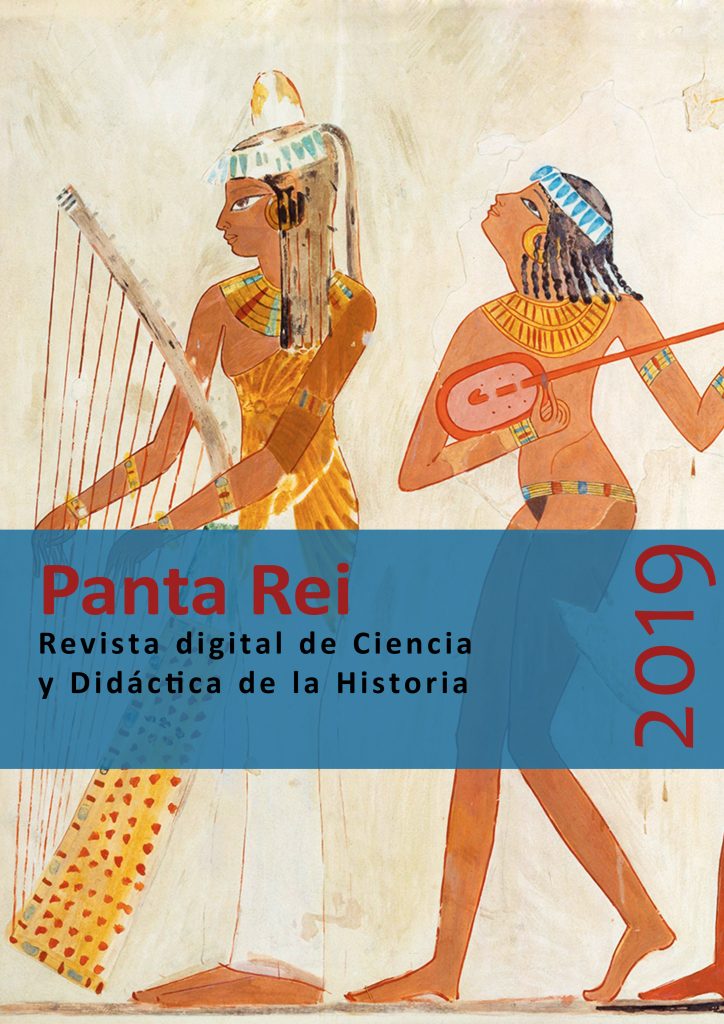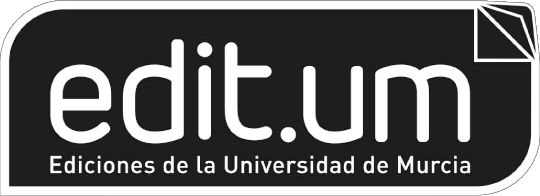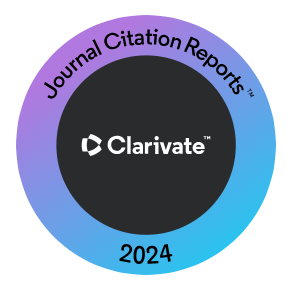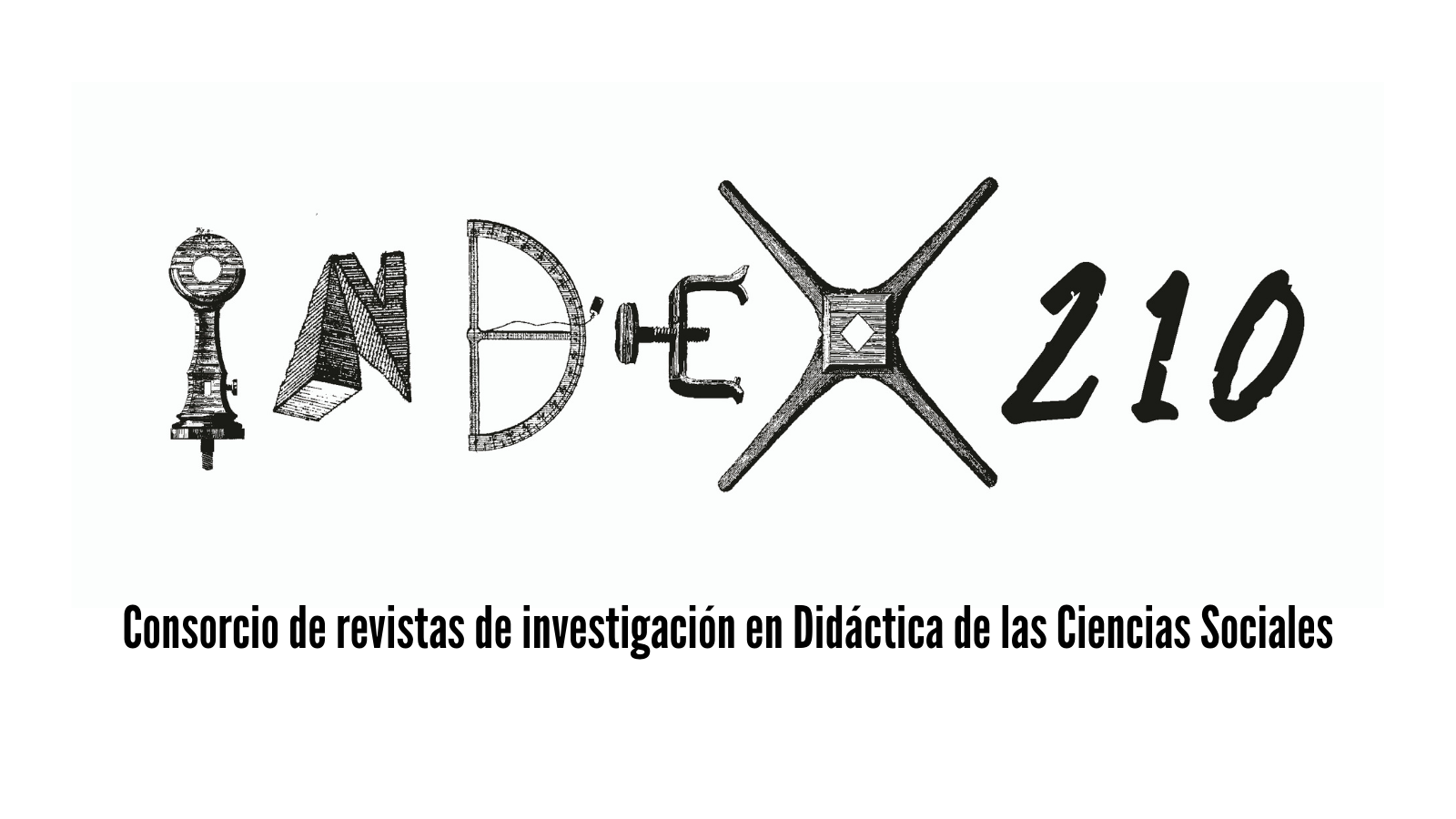The ‘Room 31’ at Mycenae: Reviewing the Interpretations of the Iconographic Program and Giving a New Reading in Relation to Spaces
Abstract
The present study addresses the iconographic program of the ‘Room 31’ at Mycenae with the aim of understanding the meaning of the paintings, the purpose for which they were created as well as their relationship with the ritual activity carried out in the place. To that end, while reviewing the existing theories, we will proceed to the analysis and interpretation of each figure and the decorative motifs. To conclude, we will keep in mind the archaeological context of the room and the rest of the spaces in order to determinate a possible link with other nearby rooms of the ‘Cultual Center’, whose relationship is essential to give a new interpretation of the paintings.
Downloads
-
Abstract868
-
PDF (Español (España))381
-
EPUB (Español (España))105
References
Albers, G. (2004). Re-evaluating Mycenean sanctuaries. En M. Wedde (ed.) Celebrations: sanctuaries and the vestiges of cult activity. Papers from the Norwegian Institute at Athens (pp. 111-149). Bergen: Astrom Editions.
Alušík, T. (2005). Architecture in the Aghia Triada Sarcophagus - Problems and Possible Solutions. Eirene. Studia Graeca et Latina, 4, 26-45.
Banou, E. (2008). Minoan ‘Horns of Consecration’ revisited: a symbol of sun worship in palatial and post-palatial Crete? Mediterranean Archaeology and Archaeometry, 8(1), 27-47.
Bietak, M. (2005). The setting of the Minoan wall paintings at Avaris. En L. Morgan (ed.), Aegean Wall Painting: A Tribute to Mark Cameron (pp. 83-90). London: The British School at Athens.
Blakolmer, F. (2010). A pantheon without atributes? Goddesses and gods in Minoan and Mycenean iconography. En J. Mylonopoulous (ed.), Divine Images and Human Imaginations in Ancient Greece and Rome (pp. 21-61). Leiden & Boston: Brill.
Blakolmer, F. (2013). Was there a “Mycenaean Art”? Or: Tradition without Innovation? Some Examples of Relief Art. En J. Wellhartne y F. Ruppenstein (eds.), Tradition and Innovation in the Mycenaean Palatial Polities. Proceedings of an International Symposium held at Aegean and Anatolia Department (Vienna, 2013) (pp. 87-112). Vienna: Mykenische Studien, 34.
Boëlle, C. (2001). Po-ti-ni-ja: unité ou pluralité? En R. Laffineur y R. Hägg (eds.), Potnia. Deities and Religion in the Aegean Bronze Age. Proceedings of the 8th International Aegean Conference (Göteborg University, 2000) (pp. 403-409). Liège: Université de Liège – Austin: University of Texas at Austin.
Cain, C. D. (1997). The Question of Narrative in Aegean Bronze Age Art. Toronto: National Library of Canada.
Chadwick, J. (1976). The Mycenaean World. Cambridge: Cambridge University Press.
Chapin, A. (2016). The Performative Body and Social Identity in the Room of the Fresco at Mycenae. En M. Mina, S. Triantaphyllou y Y. Papadatos (eds.), An Archaeology of Prehistoric Bodies and Embodied Identities in the Eastern Mediterranean (pp. 81-97). Oxford: Oxbow Books.
Cline, E. (2010). The Oxford Handbook of the Aegean Bronze Age. Oxford: Oxford Handbooks.
Cline, E. H., Yasur-Landau, A. y Goshen, N. (2011). New Fragments of Aegean-Style Painted Plaster from Tel Kabri, Israel. American Journal of Archaeology, 115(2), 245-261.
Cultraro, M. (2006). I Micenei. Archeologia, storia, società dei Greci prima di Omero. Roma: Carocci editore.
D’Agata, A. L. (1992). Late Minoan Crete and Horns of Consecration: a symbol in action. En R. Laffineur y J. L. Crowley (eds.), Eikωn Aegean Bronze Age Iconography Shaping a Methodology. Proceedings of the 4th International Aegean Conference (University of Tasmania, 1992) (pp. 247-256). Liège, Université de Liège: Aegaeum.
French, E. B. (2004). Micenas. Capital de Agamenón. Barcelona: Bellaterra.
German, S. C. (2005). Performance, Power and the Art of the Aegean Bronze Age. Oxford: Archaeopress-BAR International Series.
Gonzato, F. (2012). Ostentazione di rango e manifestazione del potere agli albori della società micenea. Monza: Polimetrica.
Hägg, R. (1985). Pictorial programmes in the Minoan palaces and villas?. Bulletin de correspondance hellénique, 11, 209-217. Recuperado de https://www.persee.fr/doc/bch_0304-2456_1985_sup_11_1_5280.
Immerwahr, S. (1990). Aegean painting in the Bronze Age. London: Pennsylvania State University Press.
Jones, B. (2015). Ariadne’s Threads: The Construction and Significance of Clothes in the Aegean Bronze Age. Leuven: Peeters Publishers.
Kontorli-Papadopoulou, L. (1987). Some Aspects Concerning Local Peculiarities of the Mycenaean Chamber Tombs. En R. Laffineur (ed.), Thanatos. Les coutumes funéraires en Egée à l’âge du Bronze. Actes du Colloque de Liège (1986) (pp. 145–160). Liège, Université de Liège: Aegaeum.
Long, C. R. (1974). The Ayia Triada Sarcophagus. A Study of Late Minoan and Mycenean Funerary Practices and Beliefs. Göteborg: P. Åström.
Manning, S. W. (1999). A Test of Time: The Volcano of Thera and the chronology and history of the Aegean and east Mediterranean in the mid second millennium BC. Oxford: Oxbow Books.
Maran, J. y Stavrianopoulou, E. (2007). Πότνιοσ Ἀνήρ - Reflections on the Ideology of Mycenean Kingship”. En E. Alram-Stern y G. Nightingale (eds.), Keimelion: Elitenbildung und Elitärer Konsum von der Mykenischen Palastzeit bis zur homerischen Epoche. Akten des Internationalen Kongresses vom 3. bis 5. (Salzburg, 2005) (pp. 285-298). Wien: Owan.
Marinatos, N. (1985). The Function and Interpretation of the Theran Frescoes. Bulletin de correspondance hellénique, 11, 219-230. Recuperado de https://www.persee.fr/doc/bch_0304-2456_1985_sup_11_1_5281.
Marinatos, N. (1988). The fresco from Room 31 at Mycenae: problems of methods and interpretation. En E. French y K. Wardle (eds.), Problems in Greek Prehistory: papers presented at the centenary conference of the British School of Archaeology at Athens (Manchester, 1986) (pp. 245-254). Bristol: Bristol Classical Press.
Marinatos, N. (1993). Minoan Religion: Ritual, Image and Symbol. Columbia: University of South Carolina Press.
Marinatos, N. (2010). Lions from Tell el-Dab’a. Egypt and Levant, 10, 325-355. Morgan, L. (2005). The Cult Centre at Mycenae and the duality of life and death. En L. Morgan (ed.), Aegean Wall Painting: A Tribute to Mark Cameron (pp. 159-171). London: The British School at Athens.
Morgan, L. (2010). An Aegean Griffin in Egypt: The Hunt Frieze at Tell el-Dab’a. Egypt and Levant, 10, 303-323.
Niemeier, B. y Niemeier, W. D. (1998). Minoan frescos in the Eastern Mediterranean. Aegean and the Orient, 69-98.
Niemeier, B. y Niemeier, W. D. (2000). Aegean Frescoes in Syria-Palestine: Alalakh and Tel Kabri. En S. Sherratt (ed.), The Wall Paintings of Thera. Proceedings of the First International Symposium, 2 (Athens, 1997) (pp. 763-802). Athens.
Palaima, T. G. (1995). The Nature of Mycenaean Wanax: Non-indoeuropean Origins and Priestly Functions. En P. Rehak (ed.), The Role of the Ruler in the Prehistoric Aegean. Proceedings of a Panel Discussion presented at the Annual Meeting of the Archaeological Institute of America (New Orleans, 1992) (pp. 119-143). Liège: Université de Liège – Austin: University of Texas at Austin-Aegaeum.
Palaima, T. G. (1999). Mycenaean militarism from a textual perspective. Onomastics in context: lāwos, dāmos, klewos. En R. Laffineur (ed.), Actes de la 7e Rencontre égéenne internationale (Université de Liège, 1998) (pp. 366-379). Liège: Université de Liège-Aegaeum.
Rehak, P. (1984). New observations on the Mycenean ‘Warrior Goddess’, Archäologischer Anzeiger, 4, 535-545.
Rehak, P. (1992). Tradition and Innovation in the Fresco from Room 31 in the ‘Cult Center’ at Mycenae. En R. Laffineur y J. L. Crowley (eds.), Eikωn. Aegean Bronze Age Iconography Shaping a Methodology. Proceedings of the 4th International Aegean Conference (University of Tasmania, 1992) (pp. 39-74). Liège: Université de Liège- Aegaeum.
Rehak, P. (1995). Enthroned Figures in Aegean Art and the Function of the Mycenaean Megaron.
En P. Rehak (ed.), The Role of the Ruler in the Prehistoric Aegean. Proceedings of a Panel Discussion presented at the Annual Meeting of the Archaeological Institute of America (New Orleans, 1992) (pp. 95-118). Liège: Université de Liège-Aegaeum.
Renfrew, A. C. (1985). Towards a Framework for the Archaeology of Cult Practice. En C. Renfrew et al. (eds.), The Archaeology of Cult: The santuary of Phylakopi. British School at Athens Studies. Supplementary Volumes (pp. 11-26). London: Thames and Hudson.
Shaw, M. (1986). The Lion Gate Relief at Mycenae Reconsidered. Festschrift for Prof. G. Mylonas. Archaeological Society of Athens, 108-123.
Taylour, W. (1983). The Mycenaeans. Ancient Peoples and Places (Revised edition). London: Thames and Hudson.
Varias, C. (2014). Po-ti-ni-ja y si-to-po-ti-ni-ja en las inscripciones en Lineal B de Micenas. En A. Bernabé y E. R. Luján (eds.), Donum Mycenologicum. Mycenaean Studies in Honour of Francisco Aura Jorro (pp. 189-199). Peeters: Louvain – Walpole.
Vivas, I. (2013). Egipto y el Egeo a comienzos de la XVIII Dinastía: Una visión de sus relaciones, antecedentes y su influencia iconográfica. Oxford: Archaeopress-BAR International Series.
Wardle, K. (2015). Rephrasing the past: where was the “Cult Centre” at Mycenae? En A. L. Schallin y I. Tournavitou (eds.), Proceedings of the conference Mycenaean Up to Date: The Archaeology of the Northeastern Peloponnese – Current Concepts and New Directions (Swedish Institute at Athens, 2010) (pp. 577-596). Estocolmo: Swedish Institutes at Athens and Rome.
Younger, J. (1977). Non-sphragistic uses of Minoan-Mycenaean sealstones and rings. Kadmos, 16, 141-159.
Copyright (c) 2019 Pelayo Huerta Segovia

This work is licensed under a Creative Commons Attribution-ShareAlike 4.0 International License.
All the contents published in this journal are subject to an Attribution-ShareAlike 4.0 International (CC BY-SA 4.0) Creative Commons License. You are free to: Share — copy and redistribute the material in any medium or format, Adapt — remix, transform, and build upon the material, for any purpose, even commercially. Under the following terms:
Attribution — You must give appropriate credit, provide a link to the license, and indicate if changes were made. You may do so in any reasonable manner, but not in any way that suggests the licensor endorses you or your use.
ShareAlike — If you remix, transform, or build upon the material, you must distribute your contributions under the same license as the original.
Full text of the license is available in: Creative Commons License 












